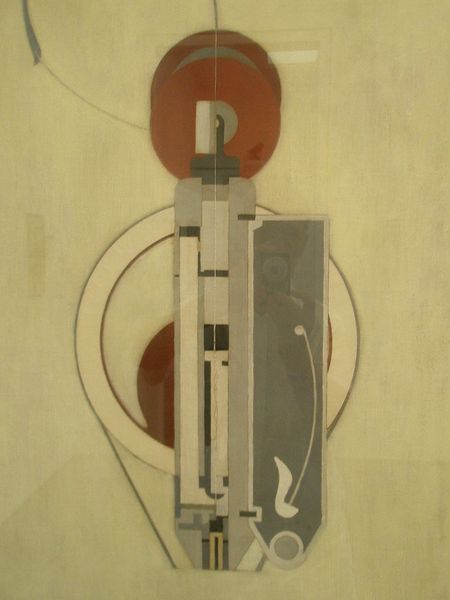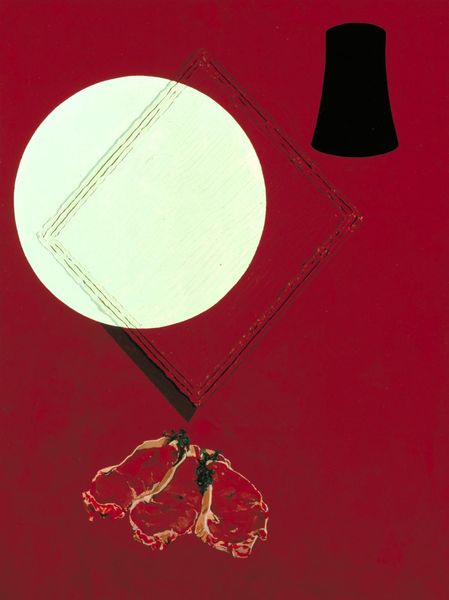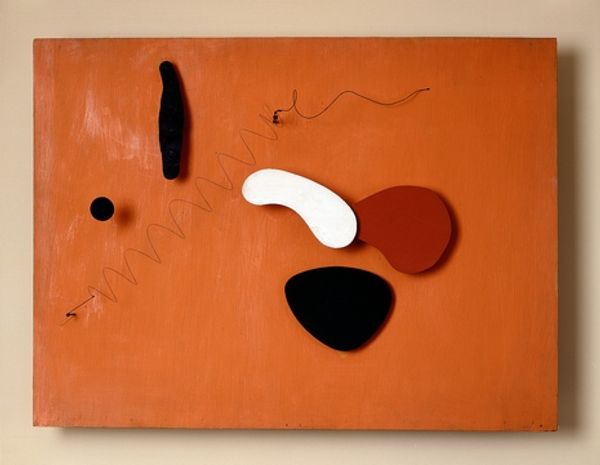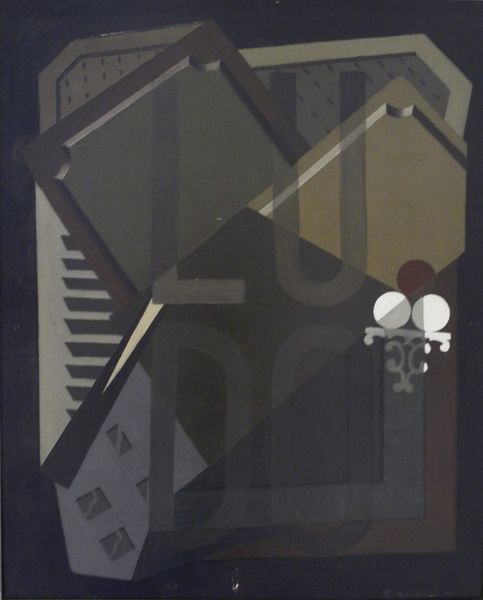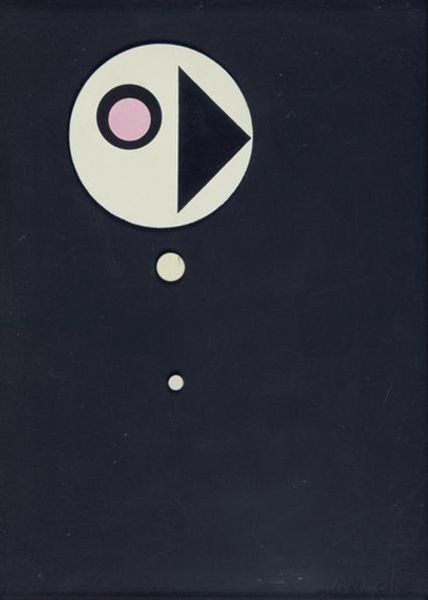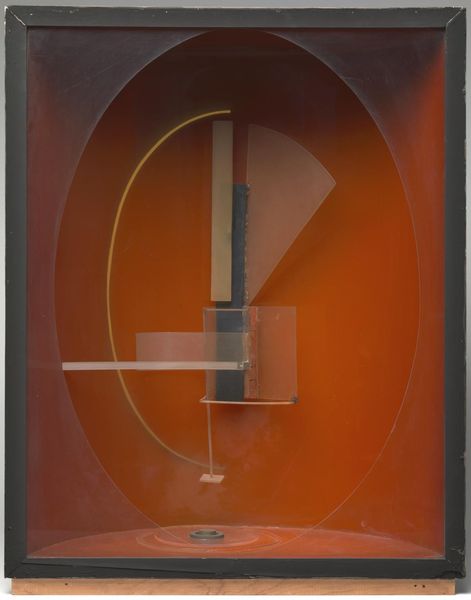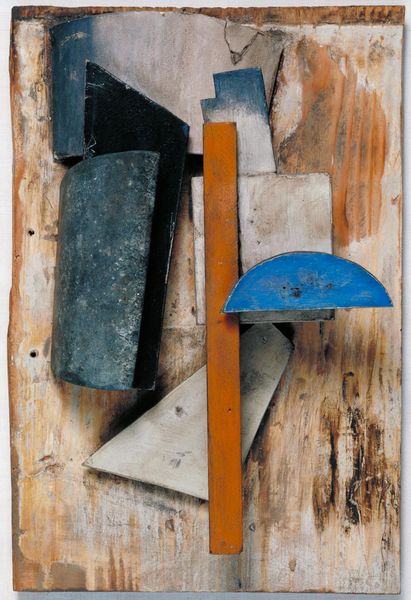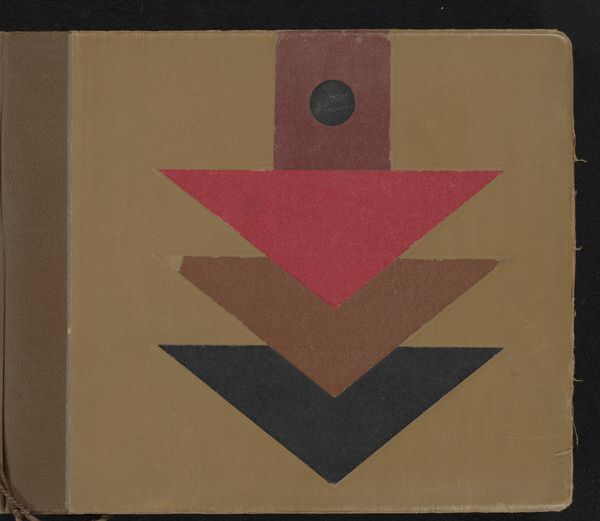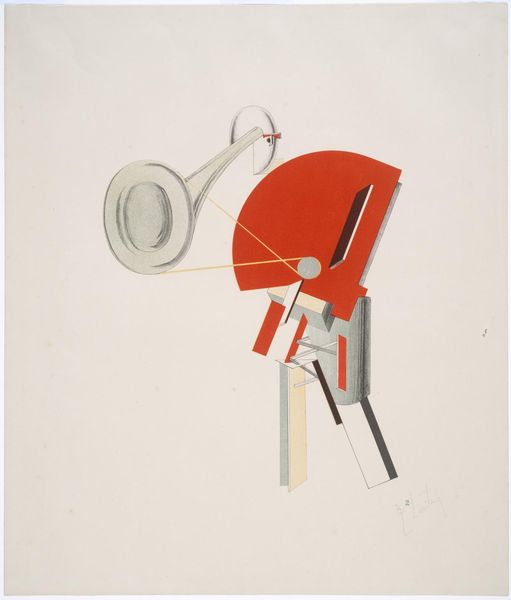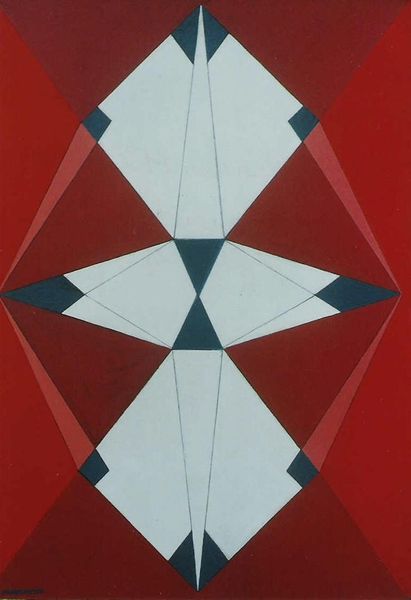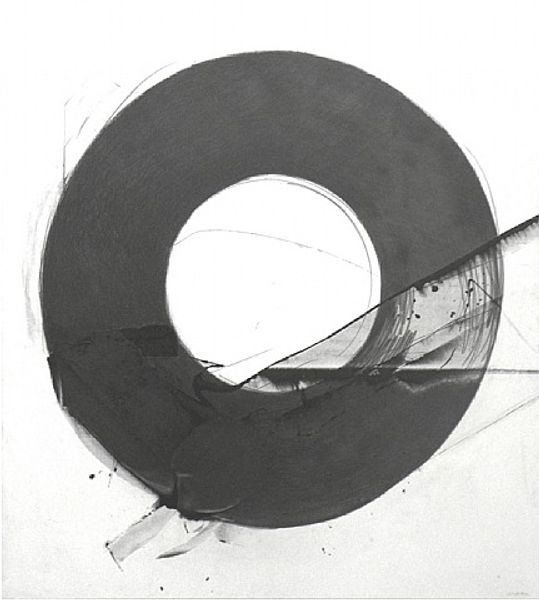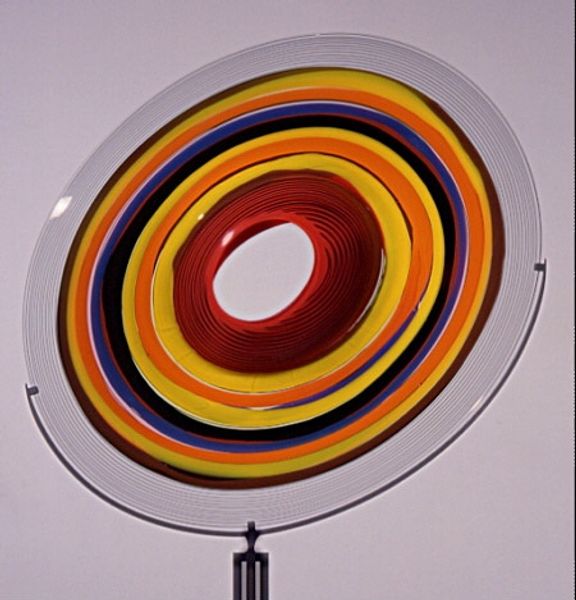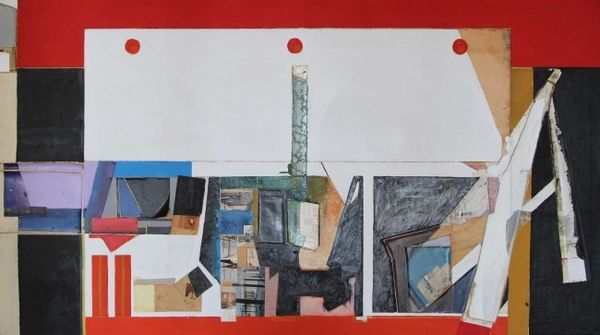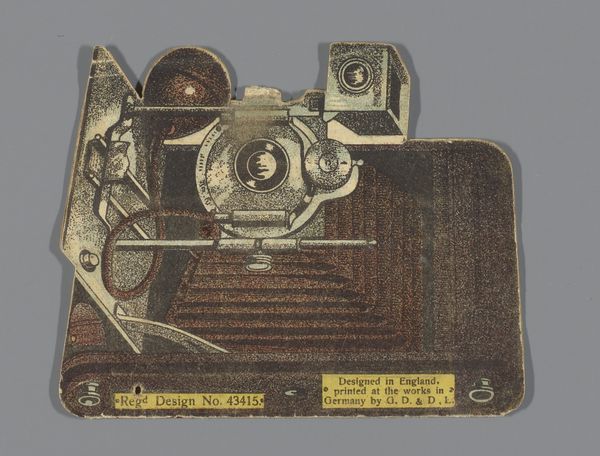
mixed-media, collage, metal
#
mixed-media
#
collage
#
metal
#
constructivism
#
form
#
geometric
#
abstraction
Dimensions: 50 x 35 cm
Copyright: David Kakabadze,Fair Use
Editor: This is David Kakabadzé's "Constructive-decorative composition" from 1924, made with mixed media, collage, and metal. The juxtaposition of these seemingly random elements is intriguing, almost unsettling. How do you interpret this work, especially given the historical context of its creation? Curator: The "Constructive-decorative composition," made during a pivotal time, begs the question: What is being constructed, and for whom is it decorative? Kakabadzé's piece emerges from the Russian Constructivist movement, initially fueled by utopian ideals of art for the revolution, but later suppressed under Stalinism. Do you notice how the geometric forms seem almost imprisoned within the frame, the mirror reflecting not outward, but back onto itself? This to me speaks volumes about the artist's potential disillusionment with the promises of social change. Editor: That's a perspective I hadn't considered. The self-reflecting mirror feels symbolic now, maybe implying the movement's inward turn. Curator: Exactly. We also have to acknowledge Kakabadzé's own identity. As a Georgian artist working within the Soviet system, questions of cultural identity and autonomy inevitably arise. How might his heritage influence his understanding of these rigid, industrial forms? Editor: So, this isn’t just an abstract composition. It’s a commentary on the socio-political landscape and the artist's place within it? Curator: Precisely. It challenges the notion of art being divorced from the realities of life, especially during tumultuous times. We must always contextualize the formal with the historical. What does that idea bring up for you? Editor: That context really deepens the work's resonance. It is so much more than just shapes and materials – it's a silent but powerful commentary on a transformative era. Curator: Agreed. It invites us to consider art not as a mirror reflecting the world, but as a prism refracting the complexities of identity, ideology, and power.
Comments
No comments
Be the first to comment and join the conversation on the ultimate creative platform.
